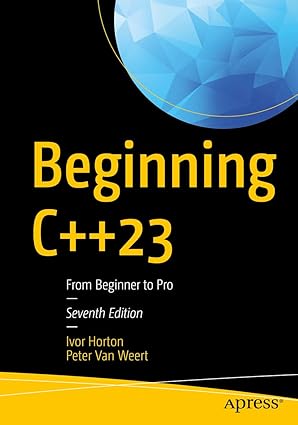As the Web has evolved, so too have users’ expectations of it–which means that today’s Web developers are being forced to deal with issues that weren’t even considerations not long ago.
How do you develop a site that customizes itself to individual users? How can you design your site so that even nontechnical users will be able to contribute content? To answer these questions and more, you need this book.
By examining your favorite Web authoring program–Dreamweaver MX 2004–in the context of databases and the technology solutions that have grown out of them, this book/CD combo will have you moving from static to dynamic sites in no time. You don’t need programming experience to construct the fictional travel tour site that’s the centerpiece of this volume. Just follow along with the 16 hands-on lessons (which include side-by-side ASP PHP, and ColdFusion code), and you’ll be well on your way to the interactive, easy-to-maintain, and standards-compliant sites that represent the way of the future.
The purpose of this book (in my opinion) is to teach you how to use Dreamweaver MX 2004 to create dynamic (database-driven) web sites. It doesn’t teach you all there is to know about Dreamweaver, about scripting languages, or about databases. Rather, it shows you how they all tie together. Yes, it will teach you a little about Dreamweaver, because you will be using it for all the lessons. Yes, it will teach you a little about scripting languages, and yes it will teach you a little about databases. You don’t need to already know these things to do the exercises or understand the lessons, because the author clearly explains everything you do. However, these topics are covered more completely in more specialized books. What this book does is show you how you can use Dreamweaver to accomplish a complete database-driven web site. Keeping this in mind, I thought the book was excellent.
The book takes you through the complete process of starting with a simple static site and converting it to a dynamic site (a challenge many web developers face). The first half of the book introduces you to the site and has you converting it from HTML to XHTML. This is a simple task, and Dreamweaver has a function to do that automatically, but the author here shows you exactly what needs to be done and how to do it manually by using search and replace. He then shows how to convert the site to use a simple CSS file. He shows how to use forms, how to pass data between pages, and how to use scripting languages to build a simple calculator. Okay, you say, that’s pretty basic stuff, and I may skip those chapters. That’s what I said, but I decided to read every word and do every exercise anyway. I’m glad I did, because there are many gems buried there. Dreamweaver can make even simple tasks more efficient with its built-in capabilities that I didn’t know existed even though I’ve been using Dreamweaver for years. So, skip the first few lessons if you want, but I suggest you do it all. The last half of the book has you working with database functions and learning how Dreamweaver ties these together with forms and GET/POST value passing.
Dreamweaver really has some fantastic capabilities in this area and it seems that you can create complete database-driven pages with just a few clicks of the mouse. Okay, that may be an exaggeration, but Dreamweaver does easily generate complex code and puts it into your page for you. The author shows you how to use those capabilities. Finally, in the last lesson, you generate the pages that update the database by just using the scripting language functions, and not using the Dreamweaver capabilities. Whatever you do, be sure to do this lesson, as it shows you all the work Dreamweaver is doing in the background for you. Armed with the knowledge from this book, and the books I already have on Dreamweaver, HTML, CSS, PHP and MySQL, I feel I can now attack a dynamic site. When I get in trouble, I can refer to the snippets of code in the book to help me get on track.

Kickstart your coding journey with Beginning C++23 – the ultimate guide to mastering the latest in modern C++ programming!
View on Amazon



